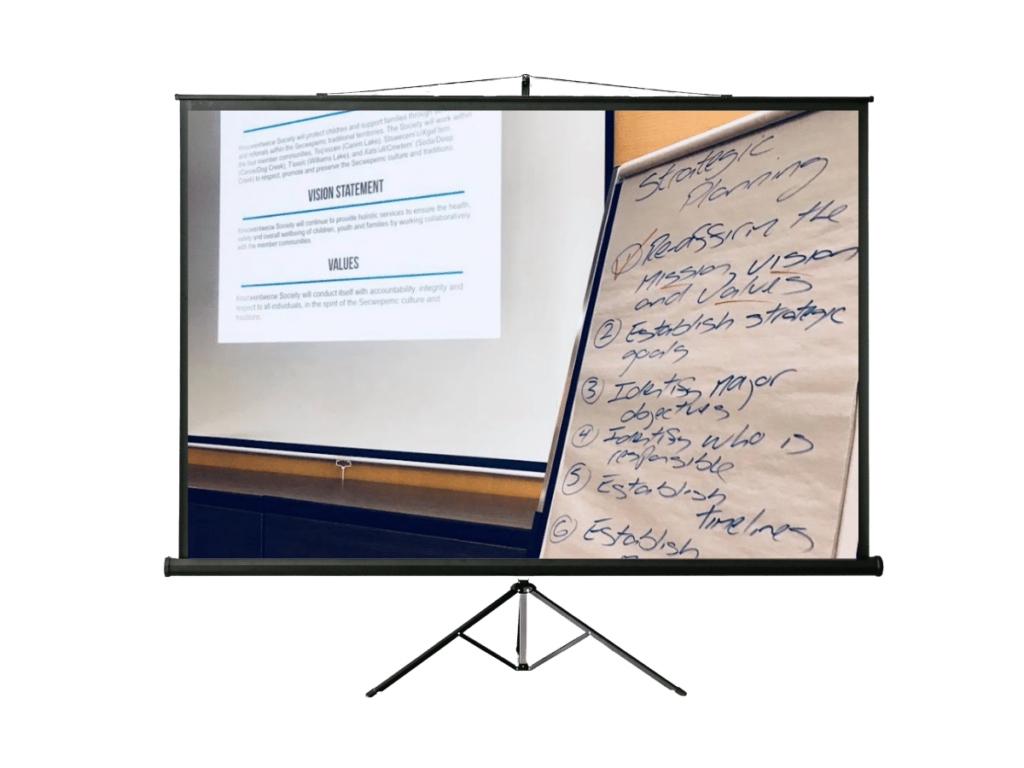
If you’ve come across nonprofit terminology you’re not quite sure of or are unfamiliar with, the complied glossary of nonprofit terminology below will help!
Table of contents | Glossary of Nonprofit Terminology
Not-For-Profit Organization
An organization governed by a volunteer Board of Directors, with no shareholders, for which profit generation is not the prime objective.
Charity
An organization governed by a volunteer Board and established for charitable purposes as defined by legislation.
Mission Statement
A nonprofit mission statement is a foundational component that every organization needs. As it is an actionable declaration of purpose. It describes your organization’s fundamental purpose, what value it delivers, who it serves and how. In other words, why does your nonprofit exist?
Vision Statement
A simple and concise picture of an ideal, desired future for the organization.
Values Statement
A clear and concise statement of how the organization should act in order to reach its vision.
Constitution
A short document stating the name of the organization and its general purposes. The original constitution and changes to it must be approved by the membership and the government.
Bylaws
Bylaws are a longer document that outlines the general operational rules of the organization.
Board of Directors
The group to whom the membership grants powers to act on its behalf. Also known as the Board of Governors, Board of Directors or Council.
Advisory Boards
A group of respected volunteers who are called upon from time to time to advise the board. Sometimes comprised of past Presidents of the Board.
Chair
The individual who oversees meetings of the Board is the senior elected officer.
Also read: The Role Of The Board Chair At Meetings
Chief Executive Officer (CEO)
This senior staff officer has overall management responsibility for an organization. The CEO is appointed by and reports directly to the Board of Directors. The CEO hires and manages other staff to implement the policies and programs approved by the Board. In some organizations, this person may be called the Executive Director.
Board Committee
Board Statutory Committees, also known as Board Committees or Standing Committees, are established by the organization’s Board of Directors. The chairs of those committees regularly report back on their activities to the Board.
They are mandated to deal with responsibilities outlined in the bylaws or enabling legislation of the organization, such as Member Discipline, Member Ethics, Board Nominations, or the NPO audit.
Policy Task Force
Policy Task Forces are established by the Board of Directors and regularly report their activities to the Board. A Board Director always chairs them, and they’re comprised of members from the Board and are mandated to examine and develop recommendations on Board policy matters.
CEO Committee
CEO Working Committees are established by the CEO and report only to the CEO. They must deal with operational or management matters, such as administering the organization’s conferences, professional development programs, or fundraising. The chair of a CEO working committee is appointed by the CEO and may be either a staff member or a volunteer.
Advisory Council
Is a group of respected volunteers called upon from time to time to offer advice to the Board and is sometimes comprised of past presidents.
The Membership Value Proposition (MVP)
The value received (tangible and intangible) from the association must be equal to or greater than the cost of belonging to the association.
Governance
Nonprofit board governance is unique in that the members of a nonprofit mostly focus on both the association’s viability and the social impact and mission. As a result, accountability and strategic planning are an important part of the governance process, as is the determination of responsibility and authority.
Governance Model
A nonprofit governance model delegates how people in authoritative positions hold themselves accountable to stakeholders. Most nonprofit governance models focus on ethics, integrity, and a responsible code of conduct for all leaders, volunteers, and workers.
Traditional Model of Board Governance
The traditional governance model has been in practice for over 75 years and is still often used as the foundation for determining governance in many nonprofits, especially smaller ones. As a result, the Board is responsible for strategic planning, budget, policies, and committees’ oversight.
Policy Governance (Carver Model of Board Governance)
Dr John Carver introduced the Carver Policy Governance model to answer some of the weaknesses of the traditional model. In the Carver model, the Board focuses on determining the overarching policies of the organization, the “ends.” At the same time, responsibility is delegated to the CEO and other members to establish the “means” or the implementation of the policies.
The Complementary Model of Board Governance
The Complementary Model provides Nonprofits with a modern governance alternative when neither the Traditional Model nor the Policy Board Model (Carver) provides the best answer to the question: What is the most appropriate role for our Board of Directors and our Chief Executive Officer?
Need help increasing your nonprofit’s effectiveness?
An efficient board starts with the implementation of an effective governance model.
AMC’s governance training helps nonprofit boards navigate governance and management to stay focused on their organization’s mission and visions. It includes valuable tools and clear guidance to address many not-for-profit organizations’ governance challenges.
Join NPO Academy’s Online Board Governance Training and implement the Complementary Model of Board Governance to build an effective partnership between the volunteer board, CEO and staff.

Strategic Planning
Nonprofit strategic planning is a critical process of identifying components that will help your organization reach its goal. Furthermore, nonprofit strategic planning also requires your organization to create goals and objectives and plan how you’ll achieve them.
Create a brighter future for your organization with AMC
AMC’s skilled strategic planning facilitators can help you navigate complex issues and build the transformative plan you need for success.
Whether you have a specific goal, troublesome problem or a new exciting opportunity you need assistance navigating -AMC’s customized strategic planning sessions will help.
Contact us today to learn how AMC’s Strategic Planning facilitators can help your organization develop, improve, and grow.

Also read:
